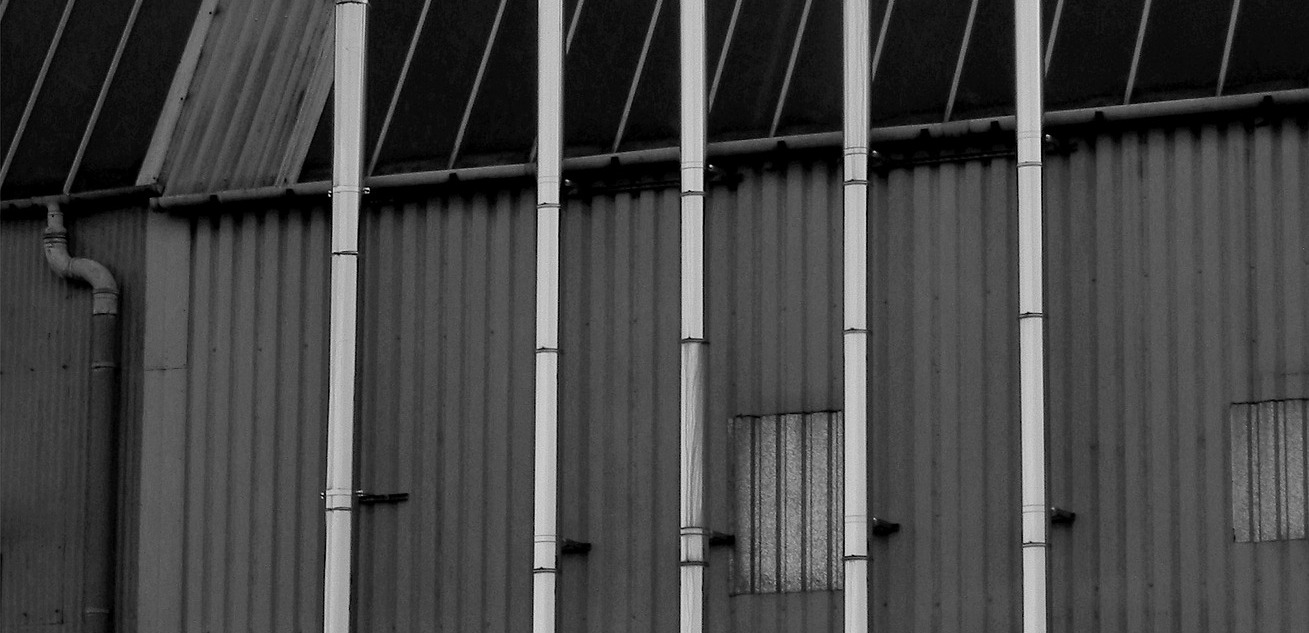Metal profile cladding
Contents |
[edit] Introduction
Metal profile sheets can be used as a form of external cladding, and are commonly used for agricultural, industrial, retail and leisure buildings. Sheets are manufactured in a range of corrugated and other profiles, such as trapezoidal, sinusoidal or half-round. The profiles are manufactured from sheets fed through banks of forming rollers. Modern manufacturing techniques allow metals to be pre-aged, coated with preservatives, or painted a wide range of hues and texture.
Metal profile sheets can be installed vertically, horizontally or diagonally, and are capable of being applied to curved facades and other complex shapes.
[edit] Types of metal
The four types of metal that are most commonly used are:
- Steel: Generally the most affordable but not as durable. Usually supplied hot-drip galvanised to provide a robust finish.
- Aluminium: Very lightweight, with a hard protective layer that protects against corrosion.
- Zinc: Highly durable and weathers to an aesthetically-pleasing lead-like hue if left untreated.
- Copper: Capable of achieving long lifespans, and requires very little maintenance.
[edit] Types of installation
[edit] Built-up sheeting
Built-up sheeting is assembled on site, and generally consists of four components:
- A thin internal liner to ensure air tightness.
- Insulation (such as mineral wool).
- Spacer bars/brackets to support the metal cladding.
- Profiled metal facing sheet to provide weather protection.
Built-up sheeting can be fitted in vertical, horizontal or diagonal patterns, and is usually fixed in place by self-tapping fixings designed to match the chosen finish. While curved systems are possible, they require careful installation.
[edit] Composites
Two metal skins are bonded to an insulating core, forming a composite ‘sandwich’ panel. The metal component, can be aluminium, zinc, stainless steel, titanium and so on, available in a wide variety of colours, finishes and profiles.
For more information, see Metal composite panels.
[edit] Cassettes
These are similar to composites, and include insulation and liners, but differ in that they are designed with easy-to-use interlocking jointing systems for quick installation. They are suitable for horizontal or vertical application on low and high-rise buildings.
[edit] Standing seam
This system can be supplied as either pre-insulated panels or as sheets that are formed and crimped on site before being applied to a plywood or similar substrate. Standing seam systems have no exposed mechanical fasteners, but use a special weathertight clipped joint instead, which creates a distinctive projecting seam. The advantage of this system is that it is very flexible and can be used to form curves and provides unbroken finishes across walls and roofs.
[edit] Rainscreen
A rainscreen (sometimes referred to as a ‘drained and ventilated’ or ‘pressure-equalised’ façade) is part of a double-wall construction. Typically rainscreens are formed of relatively thin, pre-fabricated panels. The rainscreen itself simply prevents significant amounts of water from penetrating into the wall construction. Thermal insulation, airtightness and structural stability are provided by the second, inner part of the wall construction.
For more information, see Rainscreen.
[edit] Related articles on Designing Buildings Wiki
Featured articles and news
CIOB report; a blueprint for SDGs and the built environment
Pairing the Sustainable Development Goals with projects.
Latest Build UK Building Safety Regime explainer published
Key elements in one short, now updated document.
UKGBC launch the UK Climate Resilience Roadmap
First guidance of its kind on direct climate impacts for the built environment and how it can adapt.
CLC Health, Safety and Wellbeing Strategy 2025
Launched by the Minister for Industry to look at fatalities on site, improving mental health and other issues.
One of the most impressive Victorian architects. Book review.
Common Assessment Standard now with building safety
New CAS update now includes mandatory building safety questions.
RTPI leader to become new CIOB Chief Executive Officer
Dr Victoria Hills MRTPI, FICE to take over after Caroline Gumble’s departure.
Social and affordable housing, a long term plan for delivery
The “Delivering a Decade of Renewal for Social and Affordable Housing” strategy sets out future path.
A change to adoptive architecture
Effects of global weather warming on architectural detailing, material choice and human interaction.
The proposed publicly owned and backed subsidiary of Homes England, to facilitate new homes.
How big is the problem and what can we do to mitigate the effects?
Overheating guidance and tools for building designers
A number of cool guides to help with the heat.
The UK's Modern Industrial Strategy: A 10 year plan
Previous consultation criticism, current key elements and general support with some persisting reservations.
Building Safety Regulator reforms
New roles, new staff and a new fast track service pave the way for a single construction regulator.
Architectural Technologist CPDs and Communications
CIAT CPD… and how you can do it!
Cooling centres and cool spaces
Managing extreme heat in cities by directing the public to places for heat stress relief and water sources.
Winter gardens: A brief history and warm variations
Extending the season with glass in different forms and terms.
Restoring Great Yarmouth's Winter Gardens
Transforming one of the least sustainable constructions imaginable.

























